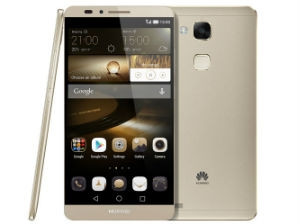
This week, a group of South-East-African journalists visited the Huawei headquarters in Shenzhen, located in the Guangdong province of China.
The Huawei campus spans 11 districts in the city and has over 50 000 employees - the majority of which are under the age of 30.
In an interview with the group of journalists, Jerry Huang, Huawei's communication director, provided an overview of the company's consumer sector and its plans for the future.
Huawei is made up of three sectors: carrier, enterprise and consumer. Most of its revenue (67%) comes from partnerships with carriers. However, the consumer section is growing; last year it contributed 20% to the $46 billion revenue.
The company was started in the eighties and only in 2003 did it begin its smartphone business.
Huang could not supply figures for the latest smartphones; however, he did say there have been seven million P7 units sold worldwide and five million Mate 7 devices.
Huawei has a presence in all African countries; in Southern Africa, it recently recorded the second largest smartphone market share.
In Europe, the Chinese brand is surpassing expectations: "In the 2015 second quarter, there was a 9.3% market share growth in Italy and 11.2% in Spain." In Germany and Belgium, the company has an 8% market share.
Huang says the brand is starting to be seen as a top tier smartphone in the European market, competing with Apple and Samsung. "We aim to offer the same level of experience, but at a more affordable price."
Xiaomi, another Chinese smartphone brand, will soon enter the South African market. Xiaomi creates low-cost smartphones with a top-tier feel.
Huang says Huawei is happy to see competitors come into the space: "In the smartphone market, one brand cannot dominate all the time."
Future of smartphones
Huang says the company has an R&D team dedicated to each aspect of smartphone innovation. This includes user experience, camera functions and fingerprint sensors.
Huawei was the first to release a smartphone with Force Touch capabilities with the Mate S this month. Force Touch makes the screen of a smartphone pressure-sensitive. Apple followed suit with the release of the iPhone 6S; however, it opted to call it "3D Touch". The new MacBook and Apple Watch both feature Force Touch.
The Mate S allows the user to weigh small amounts on the screen. These functionalities are rudimental at the moment but do open doors to innovation in the future. At the launch of the phone, Huawei said it has called on consumers to submit ideas on inventive uses of the feature.
Huang believes research and innovation in touch and fingerprint sensors will lead to the next era of smartphones - when they will be the centre of people's lives.
Wearables
At the Mobile World Conference in Barcelona this year, Huawei launched a three-in-one wearable: the Talk Band, which can be worn as a watch, a necklace or a wireless headset.
Huang says Huawei is just starting out in the wearable space and could not reveal how sales of the band were doing so far. However, he did say the company sees big potential in the market and will keep investing in it.
At the moment, Huawei is working on the fashion of the smart watch and adding a classic finish so that it has wider appeal and delivers a high-class experience.
In line with its smart home vision, the company says the consumer will soon need (or want) to be connected to the Internet at all times. This can only be achieved through the use of wearable technology.
With a smartphone, a user is connected to the Internet and social networks to know the world around them better, says Huang. "With wearables, you get to know yourself better through health monitoring.
"We predict this will become more and more important to the user and other industries. So we are working in the wearables market with a long-term view."
Share